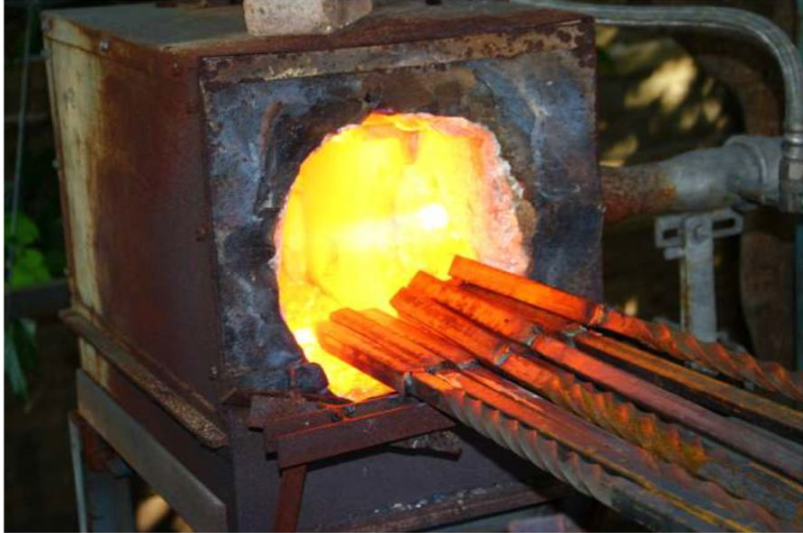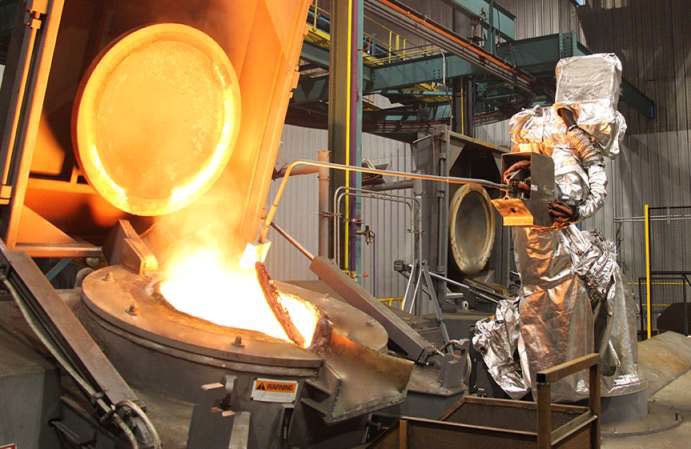India’s promising economy will accelerate the growth of the country’s steel processing industry. India is rich in steel metal raw material resources are available at an affordable rate.
India’s steel industry is important as it helps to create a competitive advantage for end-use sectors from where it sees maximum consumption. Metal consumption has been on a rise, however, owing to the low per capita metal consumption, it is expected to grow further.
There are several allied sectors such as construction, infrastructure, automotive manufacturing, railway who are traditionally large consumers of the steel industry.
Looking at the important role of the steel industry in nation-building, Steelworld Magazine had successfully organized the 18th Iron and steel Summit on 24th September 2021 with the presence of eminent speakers who have highlighted the vision of Steel Making in 2030. It was highlighted the various aspects of steelmaking such as lean Iron ore utilization, circular economy in secondary steel production, stress on applications of Light Weight steels, Nano Steels, new processes of development of steels, use of Green Hydrogen in steel manufacture, reduction in Carbon emissions during steel production, application of Industry 4.0 techniques and host of other issues.
Among the eminent speakers who spoke on this subject included Mrs. Raskha Chaube, Additional Secretary, Ministry of Steel & Chairperson of Joint Plant Committee, Mr. Rajib Paul, Additional Secretary, Ministry of Steel, Dr. Indrani Chattoraj, Director, CSIR-NML, Mr. Devendra Agrawal, Asst. General Manager, Uttam Galva Steels Ltd., Mr. Bharat Barad, Director, Somnath Steel among others.
Mr. Paul explained the role of the committee for the decarbonization of iron & steel. He explained the benefits of the reduction of chromite ore before charging in the submerged arc furnace. Ferroalloy production allowing significantly lower energy consumption. The lining life of the Induction furnace can be enhanced by regular inspection and measurement of shell temperature.
He stressed the need for switching over DRI production from coal-based Rotary kilns to gas-based Shaft Furnaces since shaft furnaces are counter-current furnaces working with gases more efficiently. The prices of natural gas have gone up abruptly from $4 to $18 MMBTU in recent time, it is important how this tax is restructured.
The work being done on Dephosphorization and Desulfurization in the induction furnace was also discussed.
Dr. Indrani Chattoraj stressed upon production of Lime, digitalization of circular economy in secondary steel production, and digitalization of steelmaking processes without factory 4.0 techniques.
Application of Green Hydrogen produced by electrolysis was emphasized. The use of lightweight steel for automobiles was stressed. Ms. Raskha Chaubey also stressed the use of steel for housing purposes. Nano steels and steels for high-temperature applications are also of great importance. Microalloying of steel is also significant for improvement in the characteristics of steel.
Mr. Devendra Agrawal highlighted the government policies and guidelines issued from time to time which are put in force at ground level insecurity. These policies impact the cost of power, raw materials (iron ore, DRI as well as Pellets, etc.) There is an anomaly in the tax structure on iron ore exported and those used in Blast Furnace iron production.
He informed that Public Sector Units are the bulk steel from secondary steel producers. Previously scrap was taxed but now this tax is removed as per the information given by Dr. Rasika Chaubey. Steel manufacturers also do not approach institutions like NML to seek solutions to problems related to cost-cutting, productivity improvements, or quality-related issues.
The cost factor on P and S removal from steel melt is an important concern and has also not been established.
Mr. Barad explained how Industry 4.0 techniques can change the face of steel making in India. He suggested an effective use of Robots, 3D pictures technology in steel manufacture, and inspect hazardous activities like working in confined areas, ingots in secondary steel, waste identification, and changing of Aluminium bars in the electric furnace, and many other activities.
As per his viewpoint, the process technology of steel production must be repaired by the year 2030. Mr. Barad also highlighted the technique of 4.0 can allow the manufacturing of the steel plant to produce steel for large-scale non-application purposes with quality and optimum capacity. Unfortunately, government agencies & data block much information which hinders players to take lead for the future.
Large-scale adoption of 4.0 techniques. 70% of steel made by large steel plants lead to 30% carbon emissions whereas secondary steelmakers contribute only 10% carbon emissions. Large steel plants have to use coke which is imported but DRI producers use coal which is indigenously available. Besides, Coal gasification technology plants are difficult to make but they allow recovery of by-products such as benzene, etc.
Factors like preprocessing of scrap, recovery of dust and heat from waste gases help in reducing the cost of steelmaking. Small steel manufacturers face problems of funds for research work but, now a day there is a good connection between them and R&D institutions.
Development funds released by Government are inadequate and not properly distributed. Therefore, research and innovation activities suffer. Pilot level studies are not easily possible in India, whereas in foreign countries these are easy to carry out. Hence, scale-up of production is to manufacturing level is easily possible.
TATAs and JSW adopted 4.0 techniques and they are operating their steel plant at a 30% lower manpower capacity after the successful installation of robots. Even, it was possible to run the plant with people working from home. By 2050, Indian steel plants will achieve zero percent emission levels.
Mr. Chandekar from STEEL WORLD coordinated the proceeding of the conference as well as a panel discussion on the subject very effectively. He expressed that the road ahead for technological upgradation is steep but, by the year 2030 green hydrogen, lightweight steel will be certainly in use. Adoption of new steel technologies is very critical. Applications of steel for housing would gain good importance.
The session ended with a vote of thanks to all the participants for making it a lively session of the Iron & steel summit.




